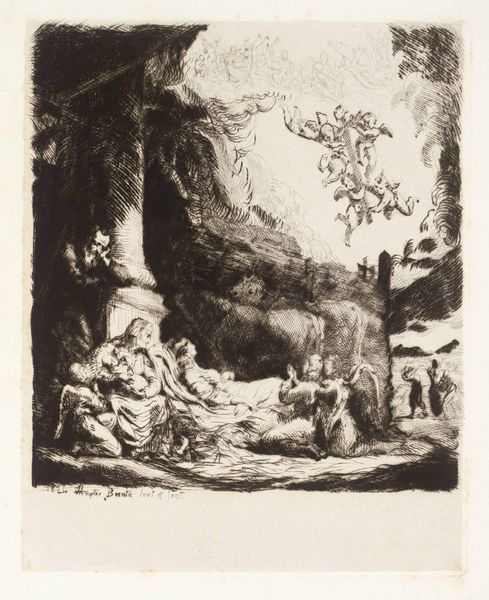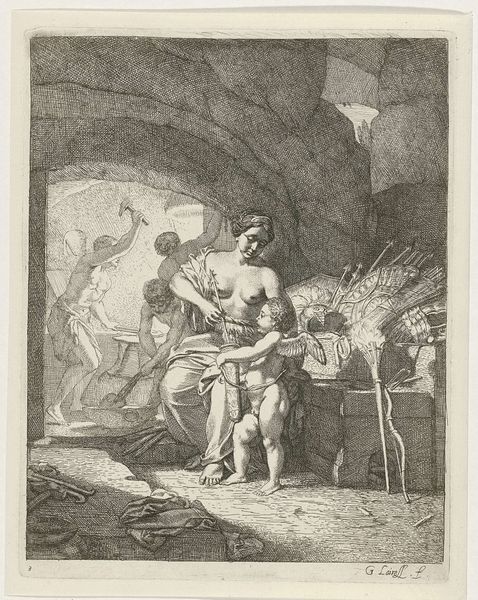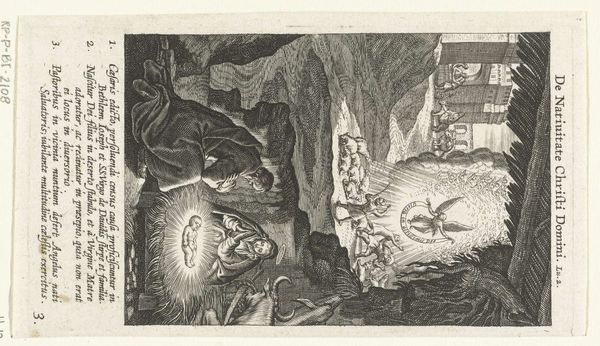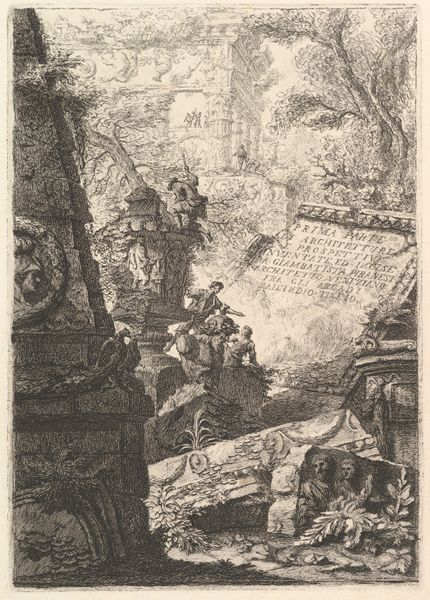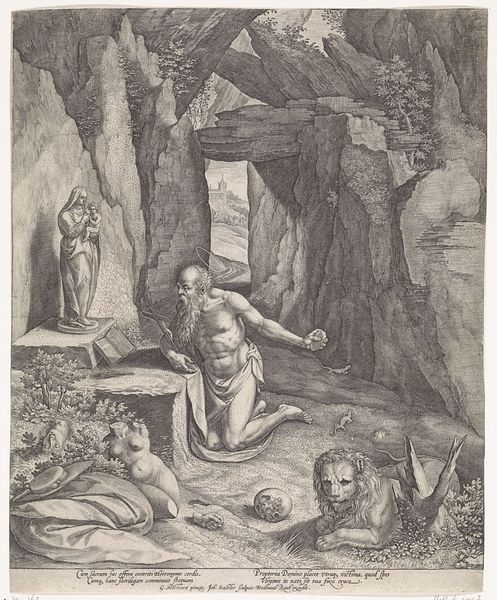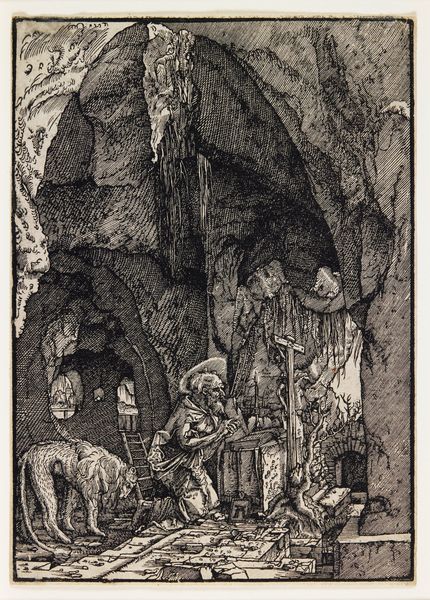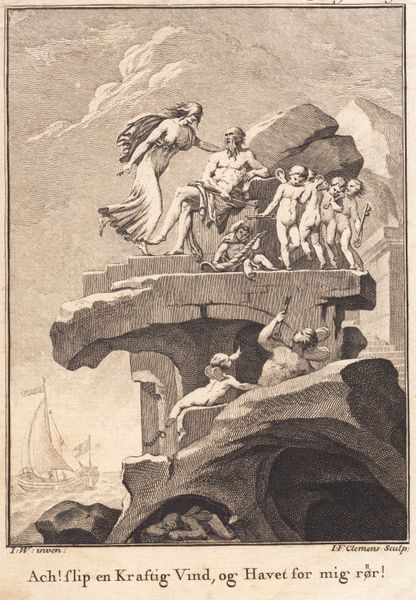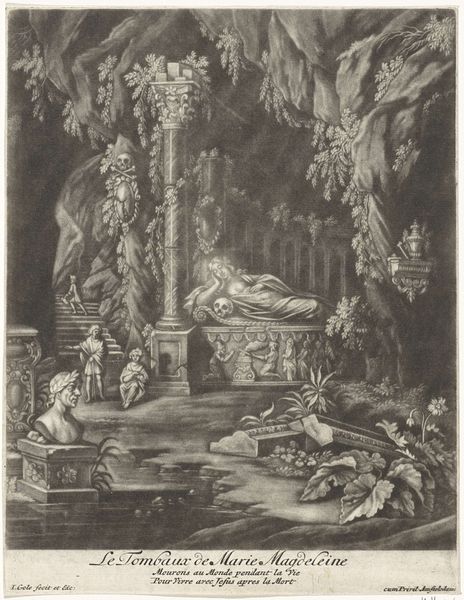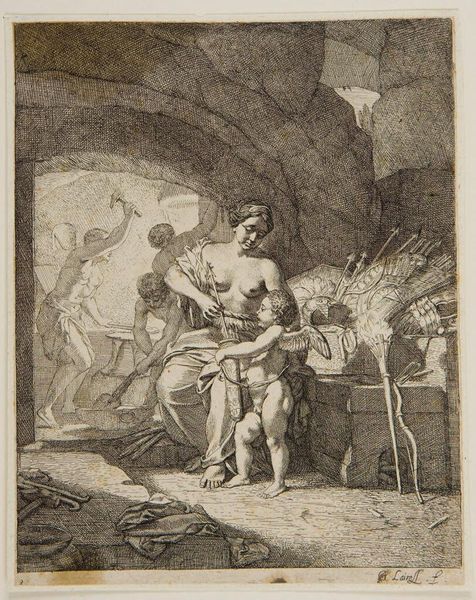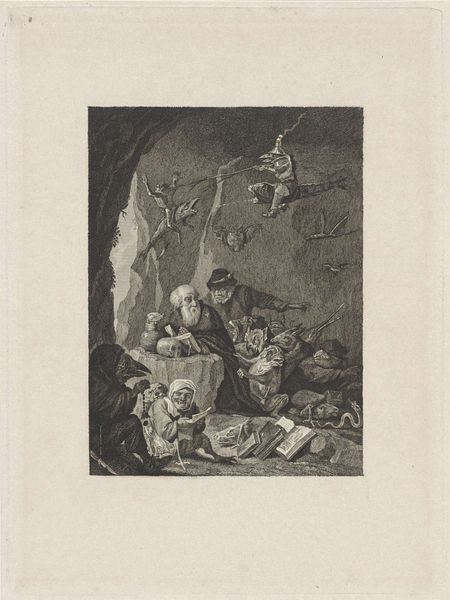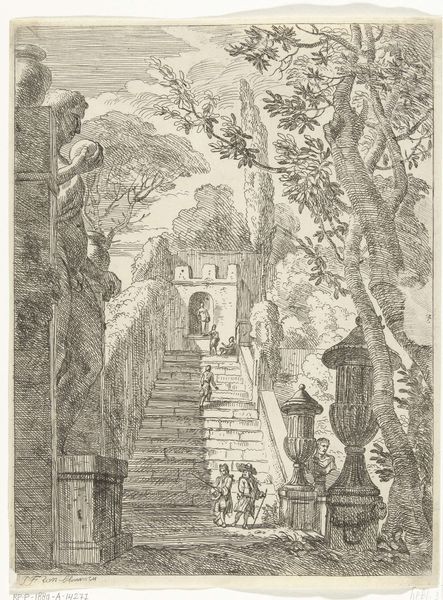
engraving
#
allegory
#
baroque
#
old engraving style
#
landscape
#
history-painting
#
engraving
Dimensions: height 243 mm, width 183 mm
Copyright: Rijks Museum: Open Domain
This print, “Nymphs in a Grotto,” was made by Pieter Schenk in the late 17th or early 18th century, using etching and engraving techniques. Look closely, and you can see how these processes yielded fine lines and tonal contrasts. The print depicts an artificial grotto, a fashionable garden feature at the time, complete with classical statuary, a fountain, and decorative elements. These refined tastes speak to a culture of wealth and leisure, reliant on the labor of many. The processes by which these structures and objects were produced often involved extensive manual work. Schenk’s print offers a glimpse into the aesthetics of the era, but also hints at the social context that enabled such displays of luxury. Etching and engraving themselves, as reproductive technologies, played a role in circulating these images and ideals. Understanding the print's making and its place in society enhances our appreciation of its visual qualities.
Comments
No comments
Be the first to comment and join the conversation on the ultimate creative platform.
